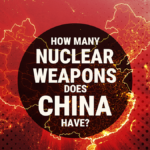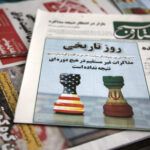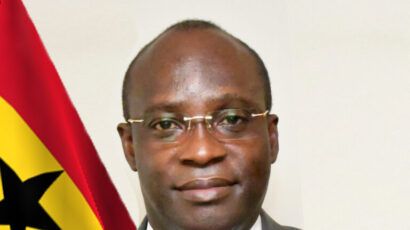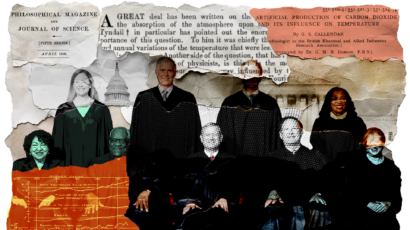Question for the candidates: How will you deter North Korea’s aggression without deteriorating the situation on the Korean Peninsula?
By Eliana Johns | September 19, 2024

Editor’s note: Eliana Johns, a senior research associate at the Federation of American Scientists and co-author of the Bulletin’s Nuclear Notebook, proposes four nuclear questions about the US arsenal, nuclear testing, use of nuclear weapons, and North Korea that journalists and citizens should ask the 2024 presidential candidates. (This is part of an “experts comment” series of questions for the candidates.)
Uploading warheads after New START
Background: New START is the last remaining arms control agreement between the United States and Russia. The treaty is set to expire under the next administration in early 2026. Regardless of potential future arms control agreements with Russia or China, the question remains whether the next president believes it will be necessary to exceed New START limits on deployed strategic warheads and upload (that is, take warheads from storage and add them onto existing missiles) more warheads onto any number of the United States’ 400 Minuteman intercontinental ballistic missiles (ICBMs), 66 strategic bombers, and 14 Ohio-class ballistic missile submarines (SSBNs).
Advocates for uploading argue that more deployed warheads are needed because China is increasing its arsenal. This, the argument goes, creates a situation in which the United States would have to confront two “near-peer” nuclear-armed adversaries at the same time. However, US nuclear strategy does not require the military to hold both countries equally and simultaneously at risk. Increasing US deployed warheads would likely cause Russia to do the same thereby increasing the nuclear threat against the United States and likely trigger a nuclear arms race. The president’s decision to maintain or abandon New START limits will establish a status quo and send a signal to the world.
Question for the candidates:
- Do you think the United States needs to increase the number of deployed nuclear warheads after New START expires in 2026, or should it seek to keep US and Russian strategic force levels at levels equal to New START?
Resumption of nuclear testing
Since 1992, the United States has observed a voluntary moratorium on nuclear testing, having instead implemented the science-based stockpile stewardship program run by the National Nuclear Security Administration (NNSA) to maintain confidence in its nuclear arsenal. The United States, Russia, and China also signed the Comprehensive Nuclear Test Ban Treaty in 1996, which prohibited all nuclear explosions. This left the United States at a comparative advantage due to its advanced technology and data garnered from past nuclear tests. Since then, the United States has continued to invest extensively in infrastructure to monitor and understand its nuclear warheads without conducting any new explosive test.
In 2023, NNSA Administrator Jill Hruby said that there is “no technical reason to conduct nuclear explosive testing.” In the past decade, however, some have argued that resuming explosive nuclear testing would be necessary to assure the “reliability and safety“ of new warheads. Should the United States resume testing, other countries—China and Russia, in particular, but also India and Pakistan—would likely follow suit and benefit more from a resumption of nuclear testing than the United States due to their less advanced nuclear simulation capabilities. Moreover, US resumption of nuclear testing would end a 30-year international norm and further undermine the United States’ nonproliferation commitments under the Treaty on the Non-Proliferation of Nuclear Weapons (NPT).
- Do you believe the United States should resume explosive nuclear testing or continue its moratorium? What are, in your view, the benefits and drawbacks of resuming testing, and how might other countries, including allies and adversaries, react?
Nuclear use and capabilities
The United States does not have a policy against the first use of a nuclear weapon, rather it “retain[s] calculated ambiguity regarding the precise extreme circumstances that might lead to a US nuclear response.” This suggests that the United States will consider options for using nuclear weapons first in a conflict, not only in response to a nuclear attack, and even if the attack is with non-nuclear weapons.
The United States has relied on its strategic nuclear forces—ICBMs, strategic bombers, and SSBNs—and nonstrategic gravity bombs deployed across NATO countries for its deterrence objectives. In addition, advanced conventional weapons increasingly provide options that previously required nuclear weapons. In current debates about how the United States should respond to increased strategic competition with Russia and China, some have argued the need for new “nonstrategic” or “tactical” nuclear weapons with low yields, such as a nuclear sea-launched cruise missile, to achieve objectives in limited regional scenarios.
While several US warheads deployed on bombers, SSBNs, and tactical aircraft already have flexible low-yield options, advocates for new “nonstrategic” nuclear weapons argue that existing systems are inadequate to react to limited nuclear use scenarios and that new “nonstrategic” weapons are needed to provide the US president with more limited nuclear options. On the other hand, “nonstrategic” nuclear weapons could increase reliance on nuclear weapons and lower the threshold of nuclear use if a larger number of weapons being deployed appear more acceptable to use and with seemingly lower risk of escalation to a larger nuclear conflict. For these reasons, the question of when to use nuclear weapons—first or only in retaliation—is a profound question a president could be faced with.
- Do you believe that it is necessary for the US military to plan to potentially use nuclear weapons first? And do you believe that existing nuclear weapons and increasingly sophisticated conventional capabilities provide adequate deterrence options for the president?
US-South Korea relations and North Korea
North Korea is continuing to expand its nuclear arsenal and issue nuclear threats. Acknowledging the value of the US-South Korean alliance, the Biden administration has worked in recent years to revitalize the relationship between the two countries and reassure South Korea of the United States’ extended deterrence commitments. Despite these efforts, however, some argue for a return of US nuclear weapons to South Korea. Doubts about the credibility of the US willingness to defend South Korea with nuclear weapons have also prompted conversations in South Korea about whether it needs its own nuclear weapons arsenal. Doing so would have profound implications for US-South Korean relations and the future of the NPT. With a potential change in administration after the upcoming election, many also wonder whether the United States will continue to invest in and prioritize the defense of South Korea.
- How will you address North Korea’s expanding nuclear arsenal and increasing provocation in a manner that both deters aggression, reassures South Korea, and doesn’t further inflame the situation? What role should nuclear weapons and other capabilities play in reducing the risk of conflict and proliferation on the Korean Peninsula?
Has Russia’s war in Ukraine changed your view of the role of nuclear weapons? By Siegfried S. Hecker
What will you do to avoid a nuclear arms race with Russia and China? By Steven Pifer
What is your plan to prevent the next dangerous and expensive nuclear arms race? By Laura Grego
How many nuclear warheads does the United States need? By Tom Z. Collina
Should the president retain the sole authority to order the use of nuclear weapons? By Mackenzie Knight
Do you agree with other world leaders that the use of—or threat to use—nuclear weapons is “inadmissible”? By Daryl G. Kimball
How will you reassure allies worried about the credibility of the US security guarantees? By Sara Bjerg Moller
What will you do if Iran gets the bomb? By Henry Sokolski
How will you deter North Korea’s aggression without deteriorating the situation on the Korean Peninsula? By Eliana Johns
Will the United States sign and ratify the Treaty on the Prohibition of Nuclear Weapons? By Alicia Sanders-Zakre
Together, we make the world safer.
The Bulletin elevates expert voices above the noise. But as an independent nonprofit organization, our operations depend on the support of readers like you. Help us continue to deliver quality journalism that holds leaders accountable. Your support of our work at any level is important. In return, we promise our coverage will be understandable, influential, vigilant, solution-oriented, and fair-minded. Together we can make a difference.
Keywords: China, New START, North Korea, South Korea, United States, candidate questions 2024, first use, nuclear testing
Topics: Nuclear Weapons















